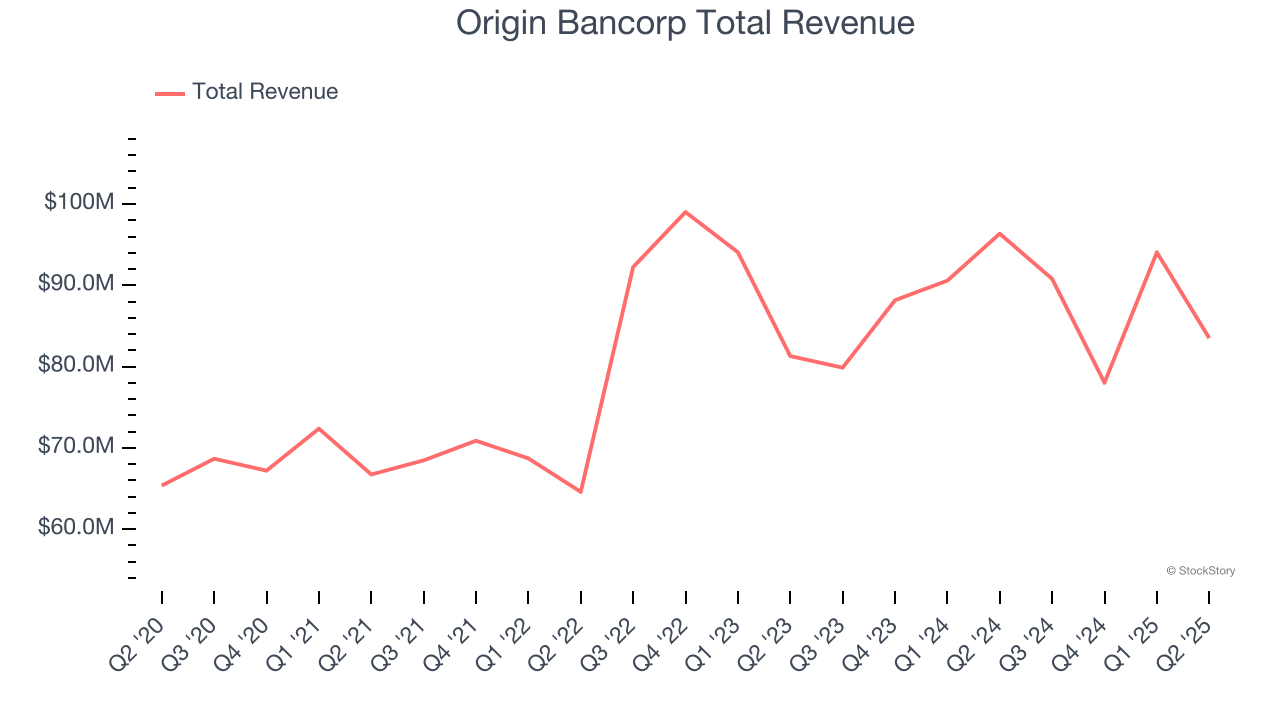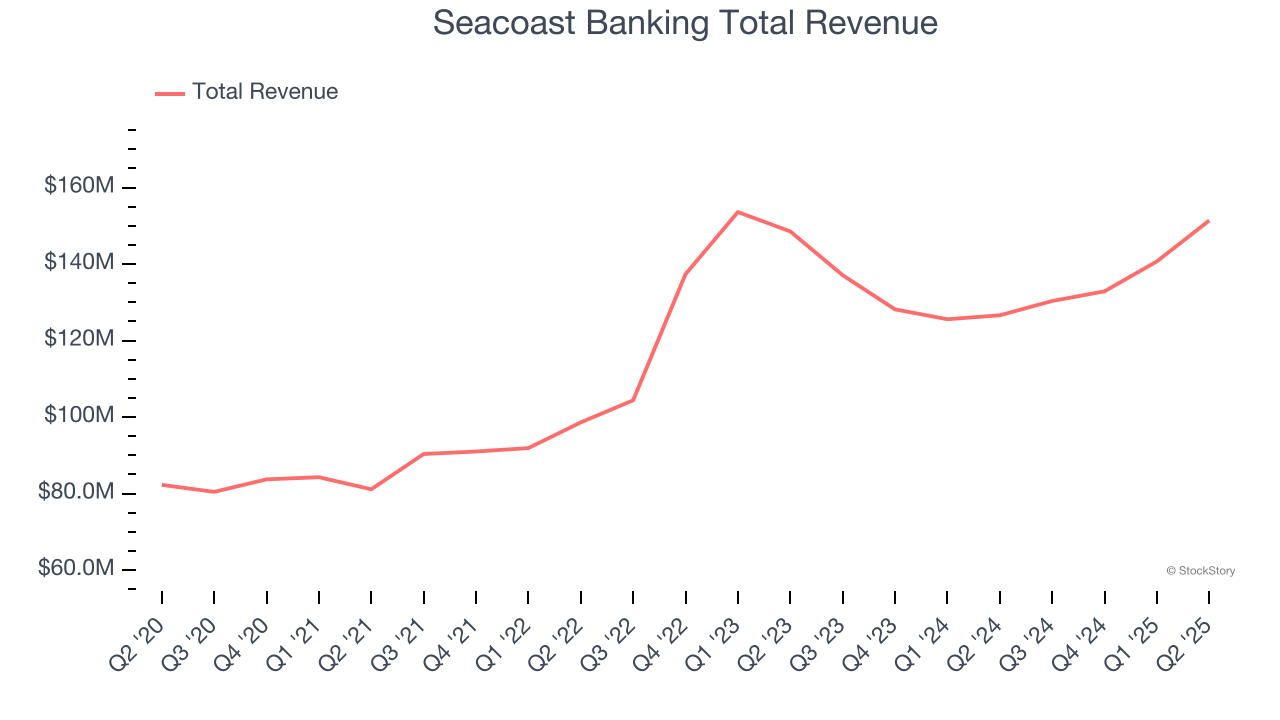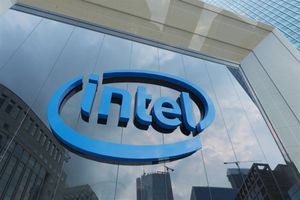
Quarterly earnings results are a good time to check in on a company’s progress, especially compared to its peers in the same sector. Today we are looking at Origin Bancorp (NYSE: OBK) and the best and worst performers in the regional banks industry.
Regional banks, financial institutions operating within specific geographic areas, serve as intermediaries between local depositors and borrowers. They benefit from rising interest rates that improve net interest margins (the difference between loan yields and deposit costs), digital transformation reducing operational expenses, and local economic growth driving loan demand. However, these banks face headwinds from fintech competition, deposit outflows to higher-yielding alternatives, credit deterioration (increasing loan defaults) during economic slowdowns, and regulatory compliance costs. Recent concerns about regional bank stability following high-profile failures and significant commercial real estate exposure present additional challenges.
The 78 regional banks stocks we track reported a satisfactory Q2. As a group, revenues were in line with analysts’ consensus estimates.
Amidst this news, share prices of the companies have had a rough stretch. On average, they are down 5.9% since the latest earnings results.
Origin Bancorp (NYSE: OBK)
Founded in 1912 during the early boom days of Louisiana banking, Origin Bancorp (NYSE: OBK) is a financial holding company that provides personalized banking services to businesses, municipalities, and individuals across Texas, Louisiana, and Mississippi.
Origin Bancorp reported revenues of $83.5 million, down 13.3% year on year. This print fell short of analysts’ expectations by 14.5%. Overall, it was a mixed quarter for the company with a decent beat of analysts’ EPS estimates.

Unsurprisingly, the stock is down 6% since reporting and currently trades at $35.39.
Is now the time to buy Origin Bancorp? Access our full analysis of the earnings results here, it’s free.
Best Q2: Seacoast Banking (NASDAQ: SBCF)
Founded during the Florida land boom of 1926 and surviving the Great Depression, Seacoast Banking Corporation of Florida (NASDAQ: SBCF) is a financial holding company that provides commercial and retail banking, wealth management, and mortgage services throughout Florida.
Seacoast Banking reported revenues of $151.4 million, up 19.6% year on year, outperforming analysts’ expectations by 5%. The business had a stunning quarter with a solid beat of analysts’ EPS estimates and an impressive beat of analysts’ net interest income estimates.

Although it had a fine quarter compared its peers, the market seems unhappy with the results as the stock is down 5% since reporting. It currently trades at $27.43.
Is now the time to buy Seacoast Banking? Access our full analysis of the earnings results here, it’s free.
Weakest Q2: Coastal Financial (NASDAQ: CCB)
Pioneering the intersection of traditional banking and financial technology in the Pacific Northwest, Coastal Financial (NASDAQ: CCB) operates as a bank holding company that provides traditional banking services and Banking-as-a-Service (BaaS) solutions to consumers and businesses.
Coastal Financial reported revenues of $119.4 million, down 11.7% year on year, falling short of analysts’ expectations by 21.5%. It was a disappointing quarter as it posted a significant miss of analysts’ net interest income estimates and a significant miss of analysts’ EPS estimates.
As expected, the stock is down 7.7% since the results and currently trades at $93.59.
Read our full analysis of Coastal Financial’s results here.
BOK Financial (NASDAQ: BOKF)
Tracing its roots back to 1910 when Oklahoma was still a young state, BOK Financial (NASDAQ: BOKF) is a regional bank holding company that provides commercial banking, consumer banking, and wealth management services across eight states in the central and southwestern US.
BOK Financial reported revenues of $535.3 million, down 3.7% year on year. This result topped analysts’ expectations by 3.3%. It was a strong quarter as it also produced a decent beat of analysts’ EPS estimates and a narrow beat of analysts’ tangible book value per share estimates.
The stock is down 6.4% since reporting and currently trades at $99.99.
Read our full, actionable report on BOK Financial here, it’s free.
M&T Bank (NYSE: MTB)
Tracing its roots back to 1856 when it was founded as Manufacturers and Traders Bank in Buffalo, New York, M&T Bank (NYSE: MTB) is a regional bank holding company that provides retail and commercial banking, trust, wealth management, and investment services to consumers and businesses.
M&T Bank reported revenues of $2.40 billion, up 4.1% year on year. This number beat analysts’ expectations by 0.6%. Taking a step back, it was a slower quarter as it produced a miss of analysts’ net interest income estimates.
The stock is down 6.7% since reporting and currently trades at $183.74.
Read our full, actionable report on M&T Bank here, it’s free.
Market Update
Thanks to the Fed’s rate hikes in 2022 and 2023, inflation has been on a steady path downward, easing back toward that 2% sweet spot. Fortunately (miraculously to some), all this tightening didn’t send the economy tumbling into a recession, so here we are, cautiously celebrating a soft landing. The cherry on top? Recent rate cuts (half a point in September 2024, a quarter in November) have propped up markets, especially after Trump’s November win lit a fire under major indices and sent them to all-time highs. However, there’s still plenty to ponder — tariffs, corporate tax cuts, and what 2025 might hold for the economy.
Want to invest in winners with rock-solid fundamentals? Check out our Top 5 Quality Compounder Stocks and add them to your watchlist. These companies are poised for growth regardless of the political or macroeconomic climate.
StockStory is growing and hiring equity analyst and marketing roles. Are you a 0 to 1 builder passionate about the markets and AI? See the open roles here.





